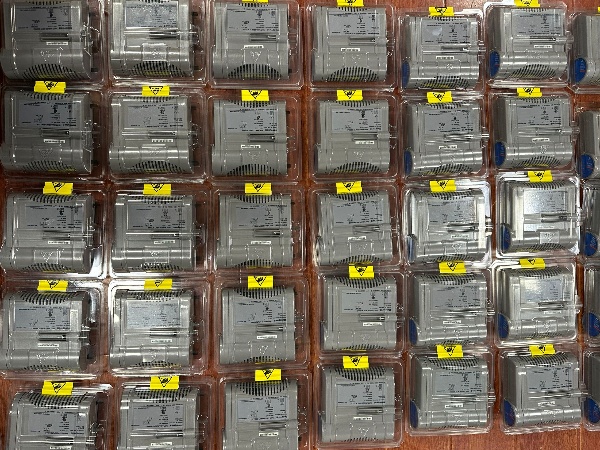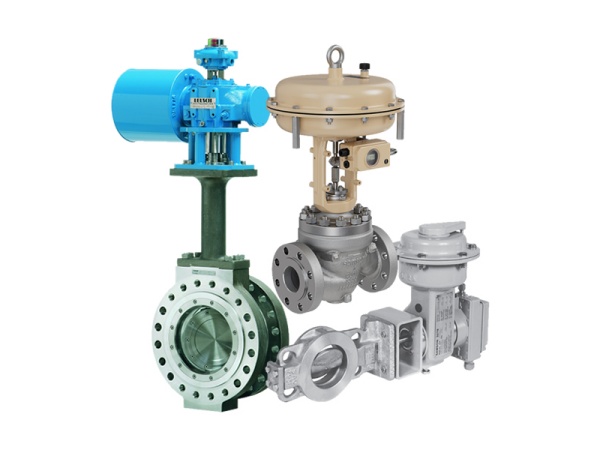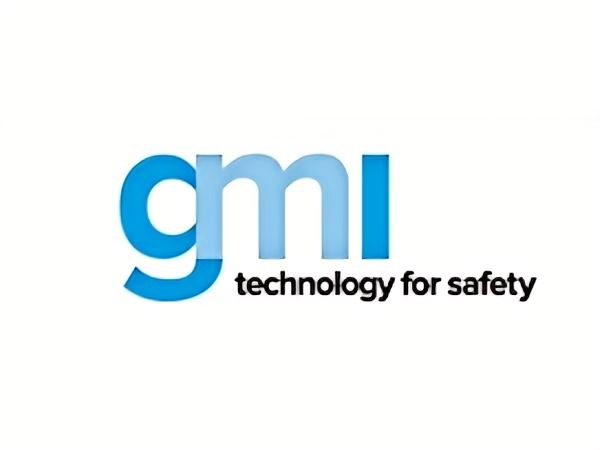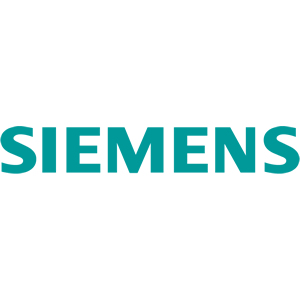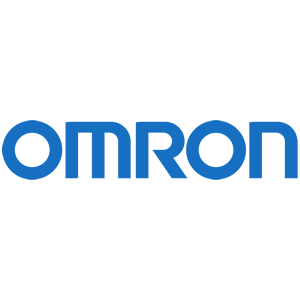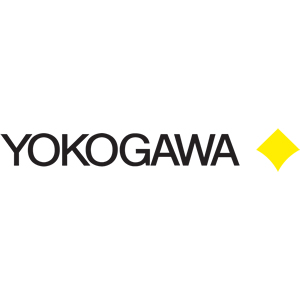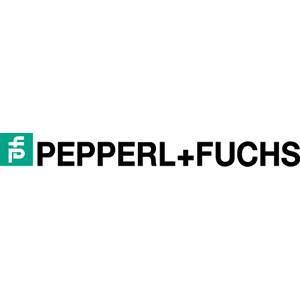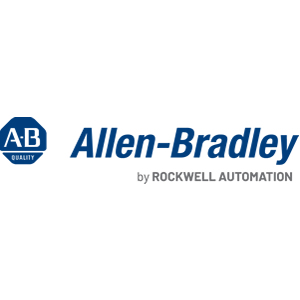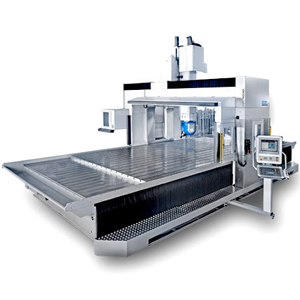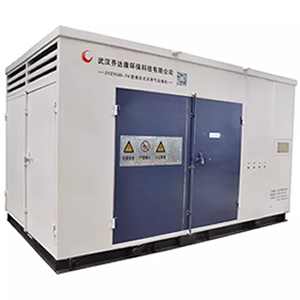ការអនុវត្តល្អបំផុតសម្រាប់សន្តិសុខសម្រាប់ក្រុមហ៊ុន Siemens និង 200Sp នៅក្នុងបណ្តាញឧស្សាហកម្ម
ការអនុវត្តល្អបំផុតសម្រាប់សន្តិសុខសម្រាប់ក្រុមហ៊ុន Siemens និង 200Sp នៅក្នុងបណ្តាញឧស្សាហកម្ម
ប្រសិនបើអ្នកកំពុងធ្វើការជាមួយស្វ័យប្រវត្តិកម្មឧស្សាហកម្មអ្នកបានជួបប្រទះនឹងក្រុមហ៊ុន Siemens Synatic ។ ប្រព័ន្ធ I / O ដែលត្រូវបានចែកចាយដែលត្រូវបានប្រើនៅក្នុងរោងចក្រជាច្រើននិងដំណើរការបរិស្ថានដោយសារតែទំហំតូចរបស់វាការដំឡើងងាយស្រួលនិងភាពបត់បែន។
ទោះយ៉ាងណាក៏ដោយជាមួយនឹងភាពងាយស្រួលនៃឧបករណ៍ដែលបានភ្ជាប់មានហានិភ័យនៃការគំរាមកំហែងតាមអ៊ីនធឺណិត។ Ransomware ការចូលប្រើដោយគ្មានការអនុញ្ញាតហើយការវាយប្រហារបណ្តាញមិនគ្រាន់តែជាបញ្ហាសម្រាប់វាទៀតទេពួកគេជាបញ្ហាធ្ងន់ធ្ងរនៅក្នុងវិស័យឧស្សាហកម្មផងដែរ។ ឧបករណ៍ដែលមិនមានសុវត្ថិភាពដូចជា et 200Sp អាចក្លាយជាចំណុចចូលសម្រាប់អ្នកវាយប្រហារដោយដាក់ប្រតិបត្តិការរបស់អ្នកទាំងមូលដែលមានគ្រោះថ្នាក់។
នោះហើយជាមូលហេតុដែលការធានាឱ្យមានឧបករណ៍ឧស្សាហកម្មរបស់អ្នករួមទាំងក្រុមហ៊ុន Siemens Synical និង 200SP គឺចាំបាច់។ យើងនៅទីនេះដើម្បីដើរអ្នកតាមរយៈរបៀបធ្វើត្រឹមត្រូវ។
1 ។ ស្វែងយល់ពីការគំរាមកំហែងដល់បណ្តាញឧស្សាហកម្មរបស់អ្នក
មុនពេលមុជទឹកជាដំណោះស្រាយសូមពិចារណានូវអ្វីដែលយើងកំពុងប្រឆាំង។ ប្រព័ន្ធត្រួតពិនិត្យឧស្សាហកម្ម (អាយស៊ីអេស) ជារឿយៗត្រូវបានកំណត់គោលដៅតាមវិធីដែលប្រព័ន្ធវាប្រពៃណីមិនមាន។
ការគំរាមកំហែងទូទៅមួយចំនួនរួមមាន:
● ការចូលប្រើដោយគ្មានការអនុញ្ញាត: ពួក Hacker ឬ Insiders ទទួលបានការចូលប្រើឧបករណ៍របស់អ្នកដោយគ្មានការអនុញ្ញាត។
● មេរោគ & Ransomware: កម្មវិធីដែលមានគំនិតអាក្រក់អាចចាក់សោរឬប្រព័ន្ធបញ្ជាដែលខូច។
● ការវាយប្រហារដោយមេក្នុងពាក់កណ្តាល: ដែលជាកន្លែងដែលនរណាម្នាក់បានស្ទាក់ចាប់សំងាត់ការប្រាស្រ័យទាក់ទងដើម្បីលួចទិន្នន័យឬចាក់ពាក្យបញ្ជា។
● ការវាយប្រហារបដិសេធ (DOS): លើសលុបប្រព័ន្ធរបស់អ្នកដែលមានចរាចរណ៍បង្កឱ្យមានការធ្លាក់ចុះឬការដាច់ចរន្តអគ្គិសនី។
បើគ្មានការការពារត្រឹមត្រូវទេ Siemens និង 200Sp ងាយរងគ្រោះចំពោះទាំងអស់នេះ។ នោះហើយជាមូលហេតុដែលសុវត្ថិភាពចាំបាច់ត្រូវចូលរួមក្នុងការតំឡើងមិនមែនគ្រាន់តែជាការគិតពិចារណាទេ។
2
ក។ ការកំណត់រចនាសម្ព័ន្ធបណ្តាញសុវត្ថិភាព
រឿងដំបូងមួយដែលអ្នកអាចធ្វើបានគឺធ្វើឱ្យប្រព័ន្ធឧស្សាហកម្មរបស់អ្នកដាច់ដោយឡែកពីបណ្តាញអាជីវកម្មរបស់អ្នក។ ប្រើផ្នែក VLAN ដើម្បីញែក et et 200sp ដូច្នេះចរាចរណ៍ការិយាល័យមិនអាចទៅដល់វាដោយផ្ទាល់ទេ។
ដំឡើងជញ្ជាំងភ្លើងដើម្បីច្រោះចរាចរចូលនិងចេញពី et 200Sp ។ អនុញ្ញាតឱ្យមានអ្វីដែលចាំបាច់។ បិទសេវាកម្មឬកំពង់ផែណាមួយដែលអ្នកមិនប្រើដូចជា HTTP ឬ SNMP ដែលអាចប្រថុយប្រសិនបើបើកចំហ។
ខ។ ការត្រួតពិនិត្យការចូលប្រើយ៉ាងខ្លាំងនិងការផ្ទៀងផ្ទាត់ភាពត្រឹមត្រូវ
ចំនួនប្រព័ន្ធគួរឱ្យភ្ញាក់ផ្អើលនៅតែប្រើពាក្យសម្ងាត់លំនាំដើម។ នោះគឺជាហានិភ័យគួរឱ្យកត់សម្គាល់។ ផ្លាស់ប្តូរពាក្យសម្ងាត់លំនាំដើមទាំងអស់នៅលើ et 200Sp និងឧបករណ៍បញ្ជាដែលទាក់ទង។
នៅក្នុងវិបផតថល TIA អ្នកអាចបង្កើតការត្រួតពិនិត្យការចូលប្រើដោយផ្អែកលើតួនាទី (RBAC) ដូច្នេះអ្នកប្រើប្រាស់អាចទទួលបាននូវលក្ខណៈដែលត្រូវការ។ ប្រសិនបើកំណែរបស់អ្នករបស់អ្នកគាំទ្រវាសូមបើកការត្រួតពិនិត្យសុភាពរាបសានៃការចាប់ផ្ដើមនិងងាយស្រួល។ ទាំងនេះធានាថាប្រព័ន្ធនេះមិនត្រូវបានរំខាននៅពេលដែលវាមានអំណាចលើ។
គ - ការគ្រប់គ្រងបំណះនិងបំណះកម្មវិធីធម្មតា
ជារឿយៗ Hacker ទាញយកអត្ថប្រយោជន៍ពីកម្មវិធីដែលហួសសម័យ។ នោះហើយជាមូលហេតុដែលការរក្សាចរន្តកម្មវិធីបង្កប់របស់អ្នកគឺមានសារៈសំខាន់ណាស់។
ធ្វើឱ្យវាក្លាយជាទំលាប់ក្នុងការតំឡើងការធ្វើបច្ចុប្បន្នភាពកម្មវិធីបង្កប់ចុងក្រោយពីក្រុមហ៊ុន Siemens ។ អ្នកក៏អាចជាវបានជាវប្រៃសណីយ៍ Siemens Securent Securents Securitys Historens ឬការដាស់តឿនវិវរណៈរបស់អ្នកដូច្នេះអ្នកបានជូនដំណឹងភ្លាមៗនៅពេលដែលមានភាពងាយរងគ្រោះណាមួយត្រូវបានរកឃើញ។
កំណត់ពេលវេលាថែទាំទៀងទាត់ដើម្បីអនុវត្តបំណះ - កុំទុកឱ្យពួកគេរង់ចាំអស់រយៈពេលជាច្រើនសប្តាហ៍។
ឃ។ ការប្រាស្រ័យទាក់ទងប្រកបដោយសុវត្ថិភាព (ការអ៊ិនគ្រីប & vpns)
នៅពេលណាដែលអ្នកភ្ជាប់ទៅ et 200Sp របស់អ្នកពីស្ថានីយ៍វិស្វកម្មឬឧបករណ៍ផ្សេងទៀតប្រើពិធីសារទំនាក់ទំនងដែលបានអ៊ិនគ្រីបដូចជា TLS / SSL ។
ប្រសិនបើអ្នកត្រូវការការចូលប្រើពីចម្ងាយតែងតែឆ្លងកាត់ VPN - កុំបញ្ចោញឧបករណ៍ដោយផ្ទាល់ទៅអ៊ីនធឺណិត។ អ្នកអាចប្រើអ្នកធ្វើសកម្មភាព Siemens Sceatan ឬ GPN OWSWAWS សម្រាប់បញ្ហានេះ។ ហើយត្រូវប្រាកដថាបិទពិធីសារដែលមិនបានអ៊ិនគ្រីបដូចជា Telnet និង FTP ដែលហួសសម័យនិងអសន្តិសុខ។
ង។ សន្តិសុខរូបវិទ្យានិងការត្រួតពិនិត្យ
សូម្បីតែអេសអេសសន្តិសុខឌីជីថលមិនជួយទេប្រសិនបើនរណាម្នាក់អាចដើរចូលនិងដកឧបករណ៍របស់អ្នកចេញ។
ធានាបាននូវម៉ូឌុល ET200SP ស្ថិតនៅក្នុងគណៈរដ្ឋមន្ត្រីដែលចាក់សោឬបន្ទប់បញ្ជាហើយអាចចូលប្រើបានតែបុគ្គលិកដែលមានការអនុញ្ញាតប៉ុណ្ណោះ។ នៅផ្នែកបណ្តាញឧបករណ៍ដូចជាកម្មវិធីរាវរកសៀមរាបឬវត្ថុរាវគួរតែត្រូវបានប្រើដើម្បីត្រួតពិនិត្យឥរិយាបថចម្លែកណាមួយ។
កំណត់ហេតុអ្វីៗគ្រប់យ៉ាង - ពីការប៉ុនប៉ងចូលប្រើការផ្លាស់ប្តូរការកំណត់រចនាសម្ព័ន្ធដូច្នេះអ្នកតែងតែមានកំណត់ត្រាច្បាស់នៃអ្វីដែលកំពុងកើតឡើង។
3 ។ មុខងារសុវត្ថិភាពបន្ថែមពីក្រុមហ៊ុន Siemens
Siemens ផ្តល់ជូននូវឧបករណ៍ជាច្រើនដែលធ្វើឱ្យការគ្រប់គ្រងសន្តិសុខកាន់តែងាយស្រួល។
● ស៊ីនស៊ីអិមអិម គឺជាប្រព័ន្ធគ្រប់គ្រងបណ្តាញកណ្តាលរបស់ពួកគេដែលជួយត្រួតពិនិត្យនិងគ្រប់គ្រងសុវត្ថិភាពឧបករណ៍នៅលើបណ្តាញរបស់អ្នក។
● នៅក្នុងវិបផតថល TIA អ្នកអាចប្រើលក្ខណៈពិសេសដូចជាការអ៊ិនគ្រីបគម្រោងនិងចំណេះដឹងអំពីរបៀបការពារការចម្លងឬកែសម្រួលគម្រោងស្វ័យប្រវត្តិកម្មដែលគ្មានការអនុញ្ញាតរបស់អ្នក។
● ក្រុមហ៊ុន Siemens ក៏លើកកម្ពស់យុទ្ធសាស្ត្រធ្វើឱ្យស៊ីជម្រៅដែលមានន័យថាប្រើស្រទាប់ការពារនៅគ្រប់កម្រិត - ពីឧបករណ៍ទៅបណ្តាញទៅនឹងកន្លែងទំនេរ។
ប្រសិនបើអ្នកធ្វើតាមឧបករណ៍ដែលមានស្រាប់ទាំងនេះហើយធ្វើឱ្យពួកគេក្លាយជាផ្នែកមួយនៃលំហូរការងាររបស់អ្នកការរៀបចំ et 200SP របស់អ្នកនឹងមានសុវត្ថិភាពជាង។
4 ។ កំហុសទូទៅក្នុងការឃ្លាំមើល
សូម្បីតែមានចេតនាល្អក៏ដោយក៏កំហុសខ្លះអាចបើកទ្វារវាយប្រហារបាន។ ជៀសវាងកំហុសទូទៅទាំងនេះ:
● រក្សាអត្តសញ្ញាណសម្គាល់លំនាំដើម: ផ្លាស់ប្តូរវាភ្លាមៗបន្ទាប់ពីតំឡើង។
● បណ្តាញផ្ទះល្វែង: ប្រសិនបើអ្វីៗទាំងអស់នៅលើបណ្តាញមួយនោះការរំលោភមួយនៅតំបន់មួយអាចរាលដាលពាសពេញគ្រប់ទីកន្លែង។ ប្រើបណ្តាញបណ្តាញជានិច្ច។
● គ្មានការធ្វើតេស្តសុវត្ថិភាពទៀងទាត់ទេ: បើគ្មានសវនកម្មឬការធ្វើតេស្តជ្រៀតចូលអ្នកនឹងមិនដឹងចំណុចខ្សោយរបស់អ្នកទេរហូតដល់វាយឺតពេលហើយ។
តាមរយៈការដឹងខ្លួននិងដោះស្រាយទាំងនេះដំបូងអ្នកជៀសវាងបញ្ហាធំជាងនេះនៅពេលក្រោយ។
ការបហ្ចប់
នេះក្រុមហ៊ុន Siemens Synatic et គឺជាផ្នែកដែលអាចទុកចិត្តបាននិងត្រូវបានគេប្រើយ៉ាងទូលំទូលាយនៃការរៀបចំឧស្សាហកម្មជាច្រើន។ ប៉ុន្តែដូចឧបករណ៍ដែលបានភ្ជាប់ទាំងអស់វាត្រូវការការការពារត្រឹមត្រូវ។
ការធានា 19EP របស់អ្នកមិនតម្រូវឱ្យមានឧបករណ៍ល្អឬការឡើងភ្នំសំខាន់ៗទេ។ វាគ្រាន់តែត្រូវការការធ្វើផែនការវិន័យនិងភាពស្ថិតស្ថេរ។ ពីការត្រួតពិនិត្យការចូលប្រើត្រឹមត្រូវនិងធ្វើឱ្យទាន់សម័យកម្មវិធីបង្កប់ទៅនឹងការទំនាក់ទំនងដែលបានអ៊ិនគ្រីបនិងសុវត្ថិភាពរាងកាយរាល់ជំហានទាំងអស់។
នៅ PLC -chain.com យើងដឹងពីរបៀបដែលឧបករណ៍ដែលអាចទុកចិត្តបានសំខាន់គឺការប្រតិបត្ដិការរបស់អ្នករួមមានការរក្សាវាឱ្យមានសុវត្ថិភាព។ ប្រសិនបើអ្នកត្រូវការជំនួយក្នុងការធានា et 200Sp របស់អ្នក 200Sp របស់អ្នកឬជ្រើសរើសម៉ូឌុលត្រឹមត្រូវសម្រាប់ការរៀបចំរបស់អ្នកក្រុមរបស់យើងនៅទីនេះដើម្បីគាំទ្រអ្នក។


